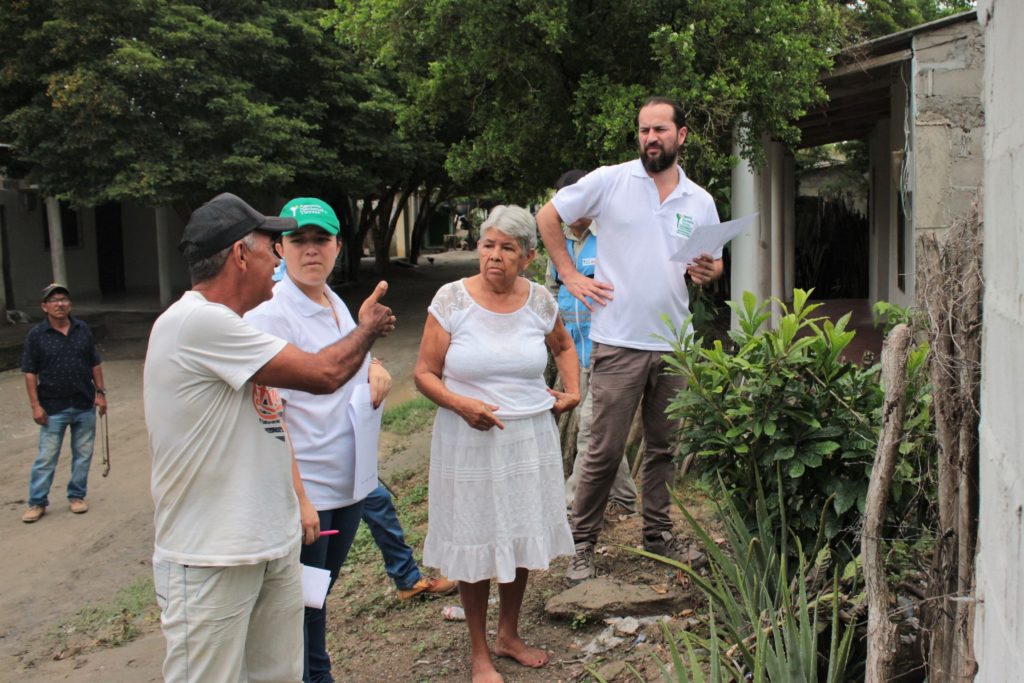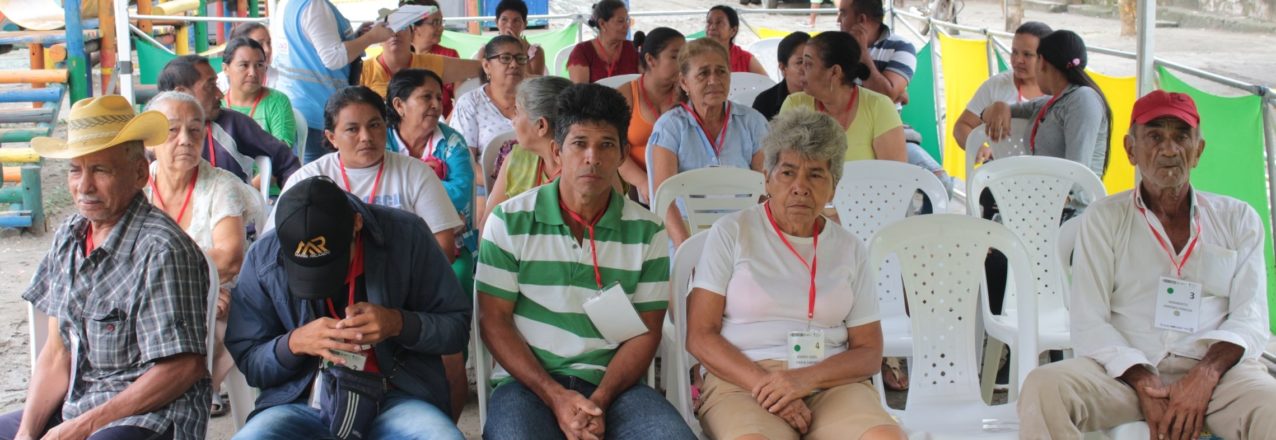A look at the public expositions and the final steps of Colombia’s first massive land formalization program
By Land and Rural Development Program in Colombia
At 6 a.m., Gloria Esperanza is already out back in the kitchen, stoking the fire. It’s Tuesday morning, her daughter-in-law is up, and it has been raining since 3 a.m. Gloria is an energetic 70-year-old woman who shares her homestead with her five grown children and their families. She has lived on the corner of 2nd Street and Main in the village of Flor de Monte for as long as she can remember, but she has never received a land title or any other documentation that says the land is hers.
After sips of coffee, Gloria and one of her sons walk down the street to the town’s main square, where a downpour has created a momentary torrent. The village has no paved roads, no cemented sports center, and no sewage system. Here, where mud is the norm in May’s rainy season, Colombia’s land titling authority, the National Land Agency, has already set up tents for the day’s activity: public exposition of land titles.
The exposition is the first time the government has ever come to Gloria’s village to administer land and property. Over the last 1.5 years, the government—supported by USAID—has applied a massive land formalization pilot to the entire municipality of Ovejas in order to test an innovative methodology to improve land titling and property in Colombia.
“The best thing about this pilot is that we don’t have to travel long distances just to learn how to do the paperwork and processes,” says Gloria. “Now the government is here and doing all the work with us in our homes.”
Demand-driven
With USAID’s support, the government is also paying for the entire process. The public exposition is one of the final steps before people like Gloria receive a land title. Each landowner walks through the “exposition” process with representatives from the National Land Agency, confirming the information about his or her property, including the size and the neighboring landowners. The exposition is a final opportunity for landowners to raise issues, complaints, doubts, or opposition to the massive titling process.
“In my family, we don’t have the money to pay for the process of land title,” says Gloria.
After registering, Gloria sits down in the waiting tent, among 20 other landowners from Flor de Monte. Each person wears a nametag; some visibly clutch an identity card, which for many of Colombia’s poor is the only government-issued document they own. Here the National Land Agency’s exposition leaders give a short speech about the meaning behind the expositions and the expected results. Today, the agency is attempting to finalize 118 land titles, more than it has ever done in one day.


